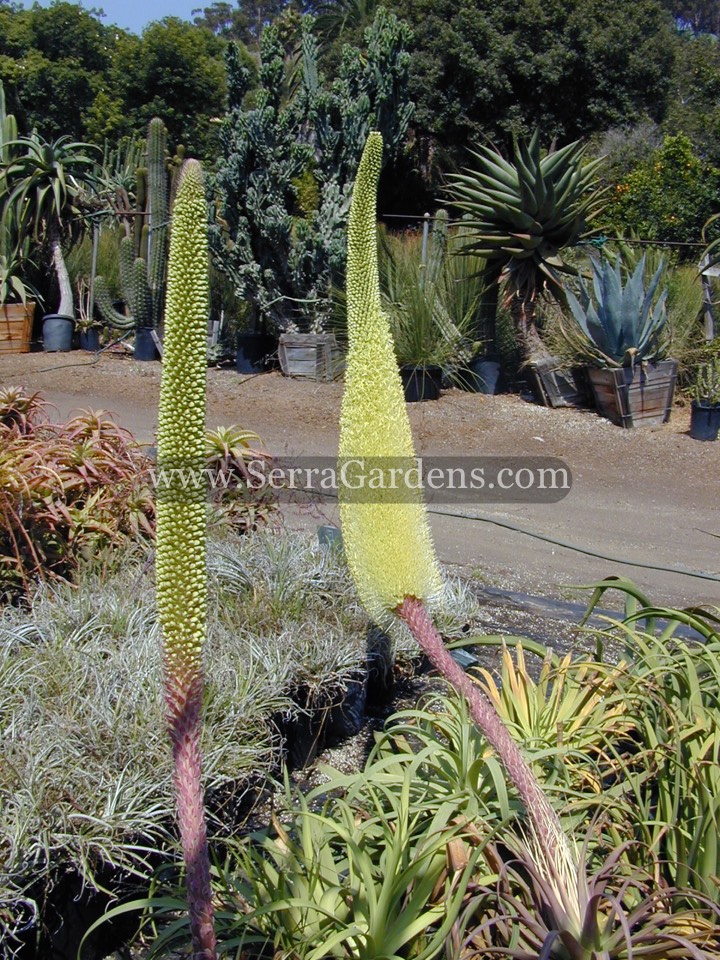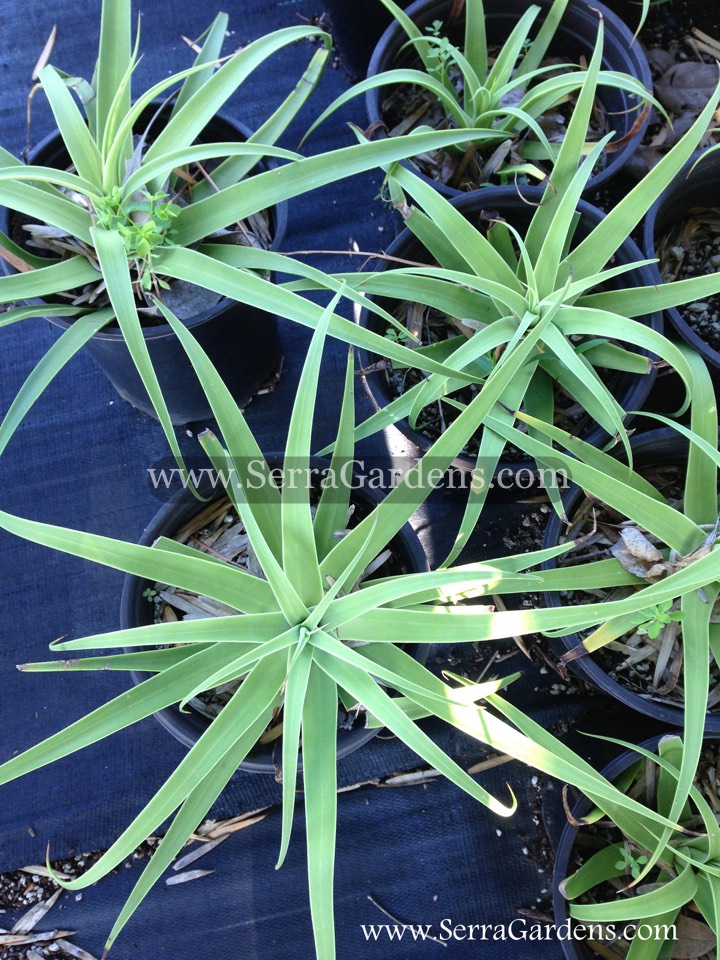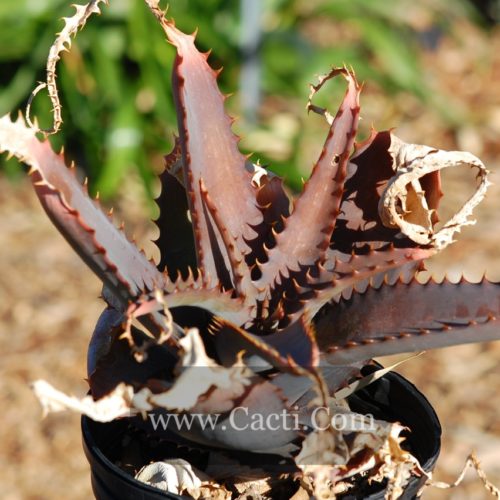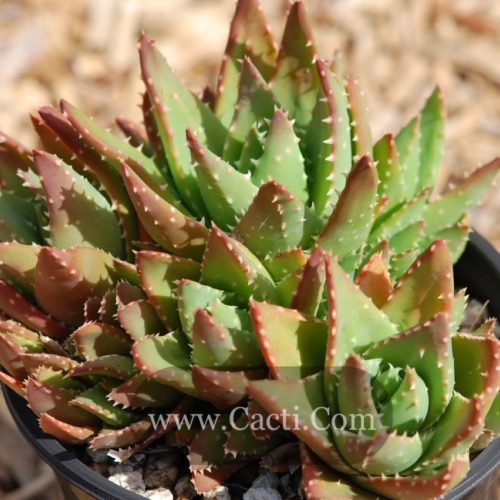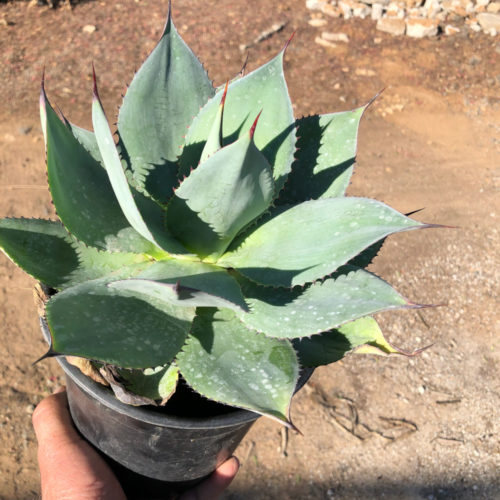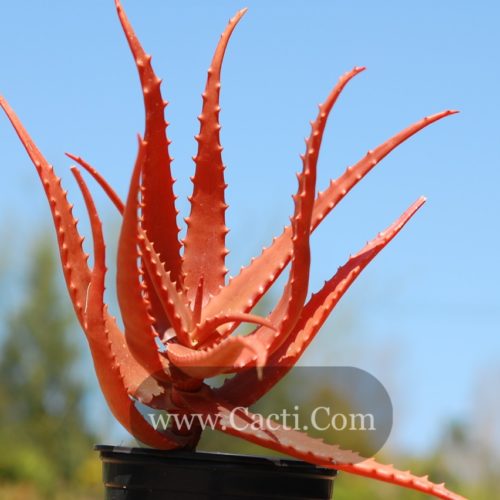Agave bracteosa AKA Squid Agave features a beautiful fountain of spineless leaves, in addition, The Squid Agave can tolerate extremes of both cold and scorching heat. Remains small at about 2′ diameter and grows rather slowly. Comes from the Coahuilan Desert where it grows on limestone cliffs between 3,000 and 5,500 feet.
This is a slow growing smaller agave. It is always a challenge planting agaves near pedestrian walkways due to their fierceness but the Spider Agave is such a gentile plant this is not a concern.
Very unique with spineless recurving and pliable leaves. This plant needs well draining soil, for this reason, keep it dry in winter in the cooler zones of its hardiness range.
It resembles a puya or similar bromeliad in many aspects.
The Spider Agave is more adaptable to light and moisture than most agaves. Another key point is semi-monocarpic so the plant does not always die after flowering. Its white flowers are held on striking unbranched candelabra-like 4 to 6 foot flower spikes. Initially solitary but eventually spreading into a large colony by offshoots.
In conclusion, The Spider Agave is great in containers, landscape borders, cactus gardens or xeriscape plantings. In a rock garden Agave bracteosa could be combined with small pines and Agave victoriae-reginae to create a setting similar to its native habitat.
Horticultural Data for Agave bracteosa AKA Squid Agave
Description | Horticultural Data | Shipping & Availability | Top
- Names and Synonyms: Agave bracteosa S. Wats. ex Engelm
- Common Names: Candelabrum Agave, Squid Agave, Spider Agave
- Family: Agavaceae
- Origin: Mexico – more specifically, the Coahuilan Desert feet between Saltillo and Monterey, growing on limestone cliffs between 3,000 and 5,500 feet in elevation. Pine tree shade is favorite location for both Agave bracteosa and Agave victoria-reginae providing some protectection from noonday sun.
- Mature Size: individual rosettes, in due time, develop into a clusters.
- Height: 12-18″
- Width: 12-18″
- Cold Tolerance: 10 to 15°F, -12.2 to -8.4°C
- Heat Tolerance: Very high
- Light Requirement: Part sun inland (to prevent yellowing of leaves) to full sun near the coast
- Water needs: Very drought tolerant, however, needs some irrigation in hot inland climates
- Maintenance: None
- Uses: Great in containers, landscape borders, cactus gardens or xeriscape plantings. The bracteosa environment can be simulated by planting under small pines along with some Agave victoria reginae and judiciously placed rocks.
- Propagation: Collect seeds after flowering and as well as offsets as needed.
- Special notes: This is a slow growing smaller agave, above all, it is a unique agave with spineless recurving and pliable leaves so that it can be planted near paths and pedestrian traffic. This plant needs well draining soil, therefore, keep it dry in winter in the cooler zones of its hardiness range. It resembles a puya or similar bromeliad in many aspects. Initially solitary but eventually spreading into a cluster via offshoots. This species is more adaptable to light and moisture than most agaves. It is semi-monocarpic so that it does not always die after flowering. 4 to 6 foot unbranched flower spikes appear after a few years which are quite spectacular.
Research Links:
http://www.smgrowers.com/products/plants/plantdisplay.asp?plant_id=2037
http://davesgarden.com/guides/pf/go/60567/
http://plantlust.com/plants/agave-bracteosa/
http://en.wikipedia.org/wiki/Agave_bracteosa
http://www.ruthbancroftgarden.org/rbgarden/pages/PlantHighl2009July.html
Shipping & Availability
Description | Horticultural Data | Shipping & Availability | Top
There is a minimum purchase of any 4 plants for online orders. All plants shipped bare root. Other sizes may be available for pick up from our growing grounds in Fallbrook, CA. For more information, give us a call at 760-990-4762.
Click here for complete Price List.

